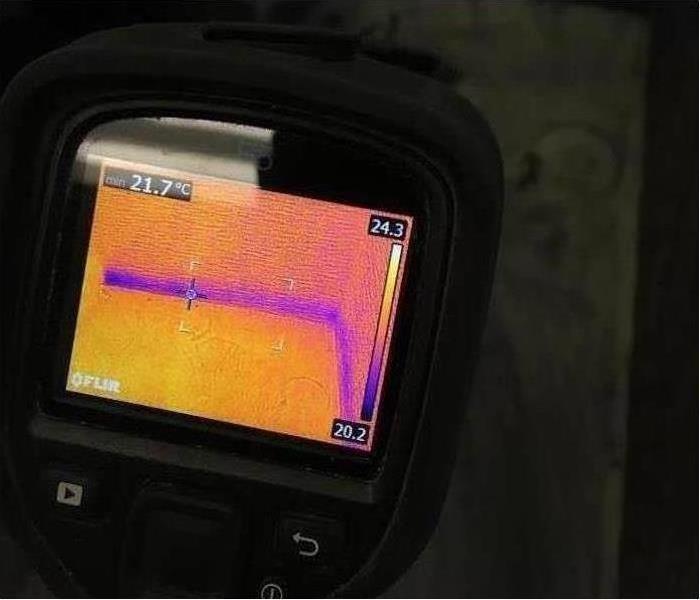Call Our Experts When You Need Water Damage Restoration Services
2/4/2020 (Permalink)
 Many times there is hidden water which contributes to the damage. We have the state of the art equipment to detect this damage and start restoration.
Many times there is hidden water which contributes to the damage. We have the state of the art equipment to detect this damage and start restoration.
Using Restoration Equipment for Water Damage in Crossville
A pipe bursting in your house is a troublesome part of homeownership. However, it happens to almost everyone at some point. It is important, when this happens, to deal with it effectively and in a timely fashion. When you leave moisture unattended, you run the risk of secondary damage such as dangerous mold infestations or warped flooring.
Experiencing this type of water damage in your Crossville home may require you to spring into action, quickly sopping up the excess and getting rid of any mess left behind. There are times when this is not enough. In these cases, it is crucial to use the appropriate equipment to detect moisture within the impacted areas.
SERVPRO water restoration specialists use thermal imaging cameras to detect moisture. At the beginning of the project, infrared cameras act as a tool to quickly evaluate the extent of the moisture within the home. They can capture images in challenging to reach places within the home without causing any damage. Thermal cameras do not display images of the actual moisture but capture images of temperature variations on a surface of the material. Depending on the time of day, and the temperature within the home, a material with hidden moisture may show warmer or colder than the surfaces without moisture. This ability to store thermal energy, either cold or hot, is thermal capacitance which varies according to the type of material.
After the SERVPRO technicians identify areas with moisture, they utilize moisture meters that measure the actual moisture level in various types of materials. It is essential to test un-impacted items within the home to help establish the moisture goal for the impacted materials. The same technician also takes the readings throughout the process to ensure consistency.
Non-penetrating moisture meters use conductivity, capacitance, or radiofrequency emissions to detect moisture while penetrating moisture meters, put tiny holes in the material, and use electrical conductivity to determine moisture levels by testing each layer of the material. Moisture meters typically give a wood scale that ranges from 5% to 30% and often give a relative scale for measure items that are not wood. Wood measurements are in percentages, while non-wood measurements are in points.
After detecting moisture, technicians move on to extracting excess water damage using portable extraction equipment and then drying the materials and the room through the use of high-velocity air movers and dehumidifiers. These moisture meters can track the progress of the drying until drying goals have been attained. These goals are comparable to the moisture content of materials in unaffected areas of the structure.
For 24/7 assistance, contact SERVPRO of Cumberland, Morgan & White Counties at (931) 250-5333. We make it "Like it never even happened."
See more about Crossville.





 24/7 Emergency Service
24/7 Emergency Service